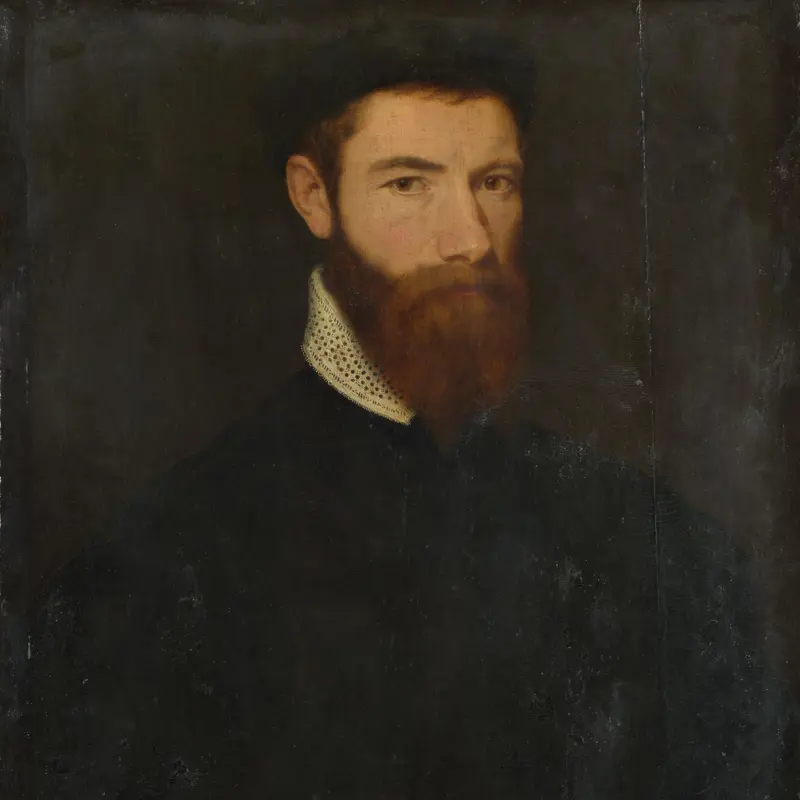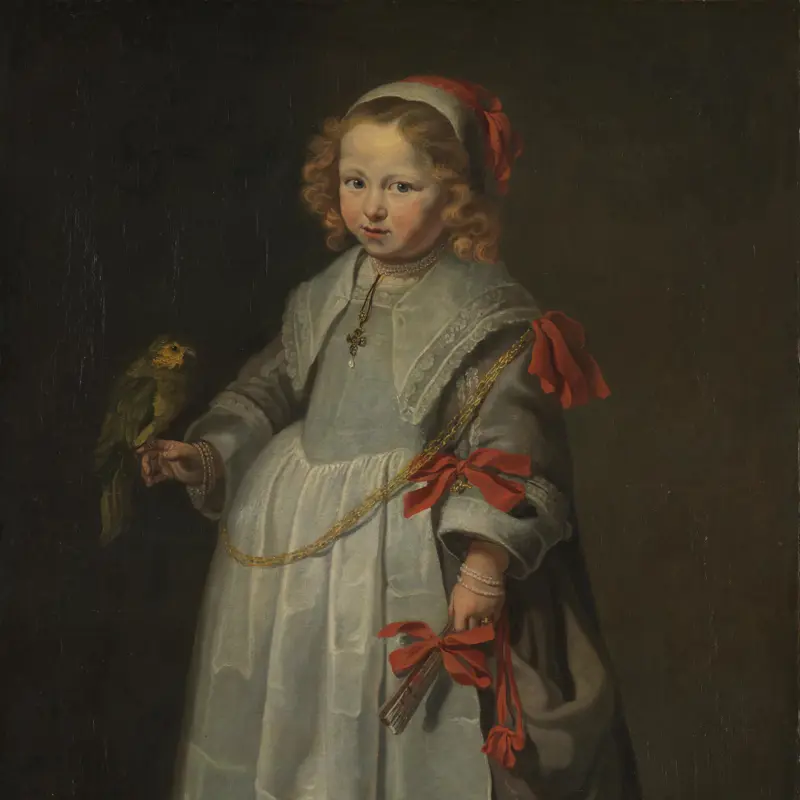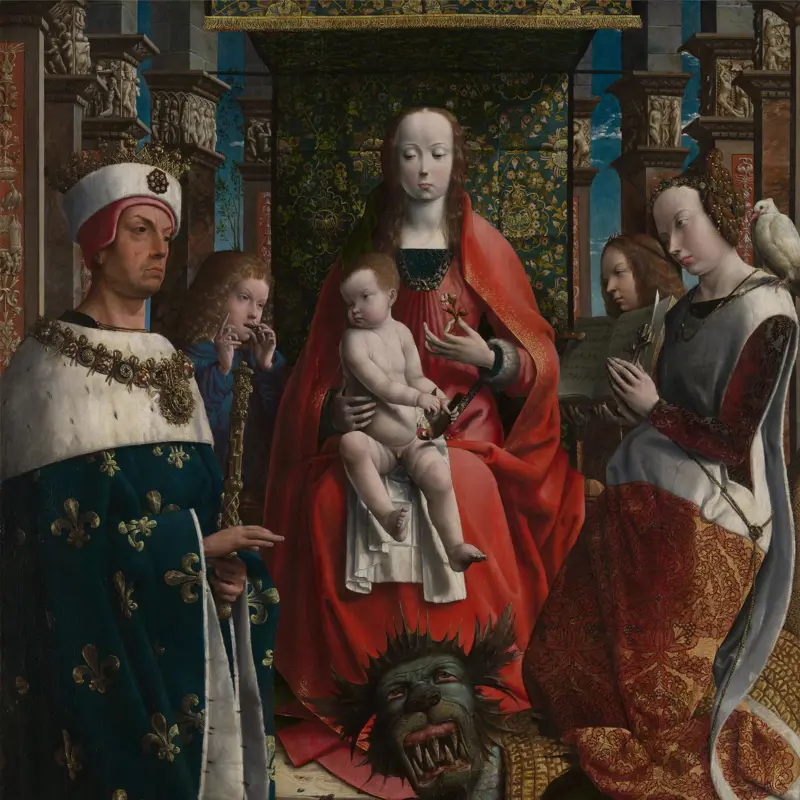Netherlandish, 'A Woman with Prayer Beads', 1540s
About the work
Overview
A well-dressed young woman gazes out from this portrait. Her chemise seems to be embroidered in black and gold at the neck and cuffs. The golden beads among other whitish ones that hang from her girdle are probably a rosary, a devotional aid often used for prayer.
We do not know the identity of the sitter; her turned-back sleeves and the girdle tied around her waist with the beads attached were fashionable in the 1540s. The portrait has been attributed to Catharina van Hemessen, but so far, no consensus has been reached about the attribution; the format and execution suggest that it was painted in Antwerp or elsewhere in the south of the Netherlands.
Key facts
Details
- Full title
- A Woman with Prayer Beads
- Artist
- Netherlandish
- Date made
- 1540s
- Medium and support
- Oil on wood (Baltic/Polish oak, identified)
- Dimensions
- 24 × 17.5 cm
- Acquisition credit
- Bequeathed by Miss Julia Emily Gordon, 1896
- Inventory number
- NG1860
- Location
- Not on display
- Collection
- Main Collection
Provenance
Additional information
Text extracted from the ‘Provenance’ section of the catalogue entry in Lorne Campbell, ‘National Gallery Catalogues: The Sixteenth Century Netherlandish Paintings: With French Paintings before 1600’, London 2014; for further information, see the full catalogue entry.
Bibliography
-
1945Davies, Martin, National Gallery Catalogues: Early Netherlandish School, London 1945
-
1955Davies, Martin, National Gallery Catalogues: Early Netherlandish School, 2nd edn (revised), London 1955
-
1987Davies, Martin, National Gallery Catalogues: The Early Netherlandish School, 3rd edn, London 1987
-
2001
C. Baker and T. Henry, The National Gallery: Complete Illustrated Catalogue, London 2001
-
2014
L. Campbell, National Gallery Catalogues: The Sixteenth Century Netherlandish Paintings: With French Paintings before 1600, 2 vols, London 2014
About this record
If you know more about this work or have spotted an error, please contact us. Please note that exhibition histories are listed from 2009 onwards. Bibliographies may not be complete; more comprehensive information is available in the National Gallery Library.



